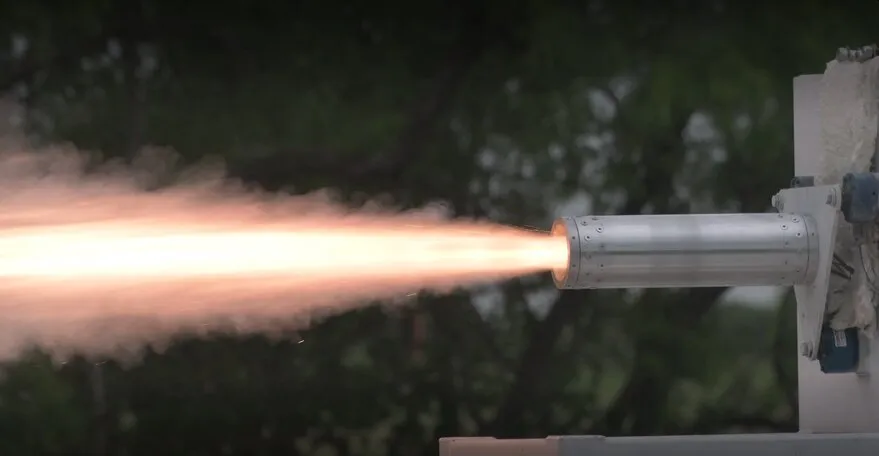At a meeting last week, Epirus CEO, Andy Lowery, was asked, “How fast could you get these things out there?” The “thing” is a high-powered microwave air defense system.
The question was asked following a meeting Lowery had at the White House with U.S. national security adviser, Jake Sullivan. The party that asked, he says, was an individual “very high up in DoD” whose top concern is fielding air defense systems.
By Saturday, the official’s concern had been underlined. That evening, a salvo of rockets and ballistic missiles were launched at American and Iraqi troops stationed at al-Asad Air Base in Iraq, injuring both. Thirteen incoming projectiles were shot down according to Agence France-Press but two hit the base.
A pro-Iran militia – the Islamic Resistance in Iraq – claimed responsibility. Whomever carried out the strike intended to overwhelm al-Asad’s air defense. They clearly did, getting weapons past the Patriot missile battery and two other short-range systems interceptor systems (a land-based C-RAM Phalanx system and a Stinger-missile enabled Avenger system) reported to be there.
If the base had had a directed energy air defense layer – either a laser or high power microwave (HPM) system, the pair of projectiles that got through, injuring American personnel, might have been deflected.
These sorts of attacks, overwhelming air defenses with rockets, missiles or drones, have been seen repeatedly in the last several weeks in the Red Sea, Iraq, Syria and Ukraine. Their saturation of air defenses led the commander of U.S. Naval Surface Forces, Vice Admiral Brendan McLane, to ask last week where are the laser and HPM systems that have long been promised?
They’re not here. Not on ships, on aircraft or on land in any numbers beyond a few prototypes. Until they can be fielded, all the hype about their cost per shot advantages, their “unlimited” magazines and their quick reaction times doesn’t matter.
Los Angeles-based Epirus is building a short-range HPM air defense system called Leonidas. The small 200-strong firm has developed a scalable system that consists of a gimbaled electronically scanned-array microwave transmitter antenna which pairs with a power conversion system and radar/EO-IR detection systems. It can be fielded as a large, trailer-mounted field defense unit, a smaller Stryker armored vehicle-mounted point defense or a small drone-carried mobile counter-electronics striker pod.
Leonidas functions much in the same way that other HPM systems do, a technology I recently described in reference to Raytheon’s DEFEND system. Epirus plans to manufacture Leonidas in a 60,000 square-foot building on the former Toyota headquarters campus in Torrance, California.
How fast can the company crank out its HPM systems?
“These are still prototypes,” Lowery cautions. “They haven’t been put through IOC [initial operating capability approval] or been produced in LRIP [low-rate initial production].”
“At a prototype level we’ll be able to field five systems immediately, we could send them to the COCOMs [combatant commands] now. By the end of the year, I told the DoD official, we could build 12. He asked, ‘How far to 40 systems?’ I said, I can get you 40 systems in two-year’s time.”
To be clear, the official had the large trailer-mounted version of Leonidas in mind. Lowery says the individual asked him to prepare a brief on what production would look like and a concept of operations for how the system would defend a medium-sized airport. The company is putting the brief together as this is written.
The “ask” is evidence of the Pentagon’s urgent demand for air defense systems. That urgency stands out when one considers that Epirus is already working with the Army’s Rapid Capabilities and Critical Technologies Office (RCCTO), an organization dedicated to rapidly acquiring systems to field.
Almost exactly one year ago, the company landed a $66.1 million RCCTO contract to develop Leonidas prototypes. Not surprisingly, Lowery says his firm can meet the demand. “We’re ready,” he declares. “We’re trying to tell the military, Congress, the press – whoever we’re talking to – that Epirus is ready to do this. A year ago, I wouldn’t have said so.”
According to Lowery, Epirus could produce Leonidas systems at a rate of up to two per month and perhaps more in the near future if given the funding to order long-lead components starting today.
While obtaining a flow of long-lead items is important, the production choke-point Lowery says is the availability of anechoic chamber facilities needed to calibrate and tune systems before sending them out. Epirus is looking to add to its own anechoic chamber facility by leasing others from holders like Raytheon.
About 50 personnel form Epirus’ manufacturing cadre at the moment. Lowery sees possible expansion of this workforce via hires from what remains of the southern California aerospace corridor.
Beyond that, the company is looking at sourcing production workers in Oklahoma for a potential second facility there. A partnership with Oklahoma University in electronics research and the presence of nearby Fort Sill suggest an expansion pathway using low to medium-skilled workers from local agriculture and Native American tribes.
In his discussion with the Biden administration’s national security adviser, Lowery told me that Sullivan expressed interest in the ad hoc capability of Leonidas. Pointing out that air defense in Ukraine is “more like a coalition than an Army”, he asked if the core HPM trailer unit could act on its own without accompanying (drone/missile) detection systems or coordinated remote sensors.
Thanks to the nature of HPM (often described as a shotgun pattern rather than a sniper rifle shot like a laser), Leonidas could function on its own Lowery says.
“The fact that we can [broadcast] a wall of energy or shield using the scanned array up to about 60 degrees of azimuth and elevation in one second… means we can defend a spot.”
“Put a truck in front of the trailer and drive it to a place close to the front lines. When you have word that [drones] are coming in from some direction by walkie-talkie, binoculars or anything, tell the team in the truck to point the system at 010-bearing, give me a spot size of 30 degrees by 30 degrees. They put it into the computer and boom, [a directed energy wall] happens. It’s as easy as that.”
Such a scenario would be less preferable than a layered air defense with multiple kinetic interceptors, HPM and laser systems and local/networked sensors but if basic survival is at stake, as it often is in Ukraine, Leonidas could provide a defense of last resort.
Lowery adds that Epirus looks at drone swarms as a big data problem as much as a medium to long range radar detection problem. He casts Leonidas as a “swarm-busting” system at its core.
He suggests what’s needed for effective short range HPM drone defense is a detection system that is the equivalent of a self-driving “Tesla on steroids” – a fly’s eye-like amalgam of optical sensors that can gulp in the swath of aerial territory and process the scene the way self-driving systems process and make sense of complex urban street settings.
Epirus is looking to marry Leonidas to this kind of detection system, a strategy the Army likes he says. However, what works on the steppes of Ukraine or in the deserts where Leonidas has been tested may not be effective in forested, hilly or urban environments where line of sight for both the detection systems and directed HPM is blocked.
Lowery explains that Leonidas fires bursts of HPM energy in the L band range (1-2 Ghz), basically at the low end of the microwave frequency range. The wavelength is less affected by line-of-sight obstructions. It’s used for ground-penetrating radars and foliage-penetrating radars.
“That’s where we operate,” Lowery affirms, “the [HPM] penetrates easily through buildings and structures. The wavelength we’ve chosen is well suited to any city or forest. The problem that we run into is that our detection systems aren’t well-suited for those places.”
It’s not clear whether Leonidas or other HPM systems have actually been tested in realistic urban or cluttered terrain environments so parsing claims about the efficacy of their directed energy bursts therein is difficult.
However, Lowery’s point about the need for sophisticated detection systems to spot and discern drones in such environments, weeding out the noise in a way not unlike optical/lidar-based computer vision self-driving systems do with high volume processing and advanced algorithms is well taken.
But one of the seminal problems of contemporary weapons systems acquisition is the Pentagon’s reluctance (refusal) to field anything before it is near perfect. During the Cold War America regularly fielded imperfect systems.
In so doing it learned quickly what worked or didn’t and iterated or replaced these systems, moving at a pace that present DoD science and technology organizations (service labs, program offices, innovation hubs, etc) cannot match. The approach also stoked small and midsize businesses like Epirus, diversifying the defense-industrial supplier base.
Challenges for HPM systems remain, not the least of which is their potential to disrupt friendly electronic systems as well as adversary systems. Fielding them successfully will require users and those forces around them to have a developed combined arms concept of operations.
Their potential to interfere with civilian systems from communications to electric cars will require agencies like the FAA to develop planning for their use and to carve out bandwidths and geography for testing and training. This has to be done at the speed with which national security planners and combatant commanders are indicating we need to field directed energy.
The challenge will accelerate as U.S. adversaries develop their own anti-air HPM systems and particularly as Epirus and others start to point their antennas down to ground level where they see potential to use HPM for everything from finding and triggering mines and IEDs to stopping autonomous ground combat robots and tactical vehicles (particularly hybrid or battery-electric vehicles) in their tracks.
Epirus has done classified work on the possibility of yoking its system to ground and marine threat defense. It also views its system as a short-range compliment (5 kilometers or less) to other directed energy or kinetic air defense systems like the Marine Corps’ drone-shooting Marine Air Defense Integrated System (MADIS) and Medium-Range Intercept Capability (MRIC).
Lowery says Jake Sullivan’s primary areas of interest focused on Ukraine in their discussion. The counter-UAS, de-mining and communications disruption potential of HPM that can find application there apply much more broadly. They also talked about hurdles facing non-traditional defense contractors.
“I haven’t been too disappointed with the speed with which my customer [RCCTO] is moving, I told him. However, they’ve been moving at the speed they’ve been prescribed to which is several-years’ pace versus a decade. The issue is that we should be on a several months cycle rather than a several years cycle.”
As these discussions happen, America’s adversaries are watching us struggle with mass-fires, learning our limits and how to exceed them right down to sending formations of literal toy UAVs at targets to complicate and exhaust air defenses.
The U.S. personnel who endured last weekend’s attacks at al Assad are being evaluated for traumatic brain injuries. Whether the incoming rounds are drones, rockets, missiles or artillery, American forces had better add directed energy to keep them off our foreheads – and soon.












